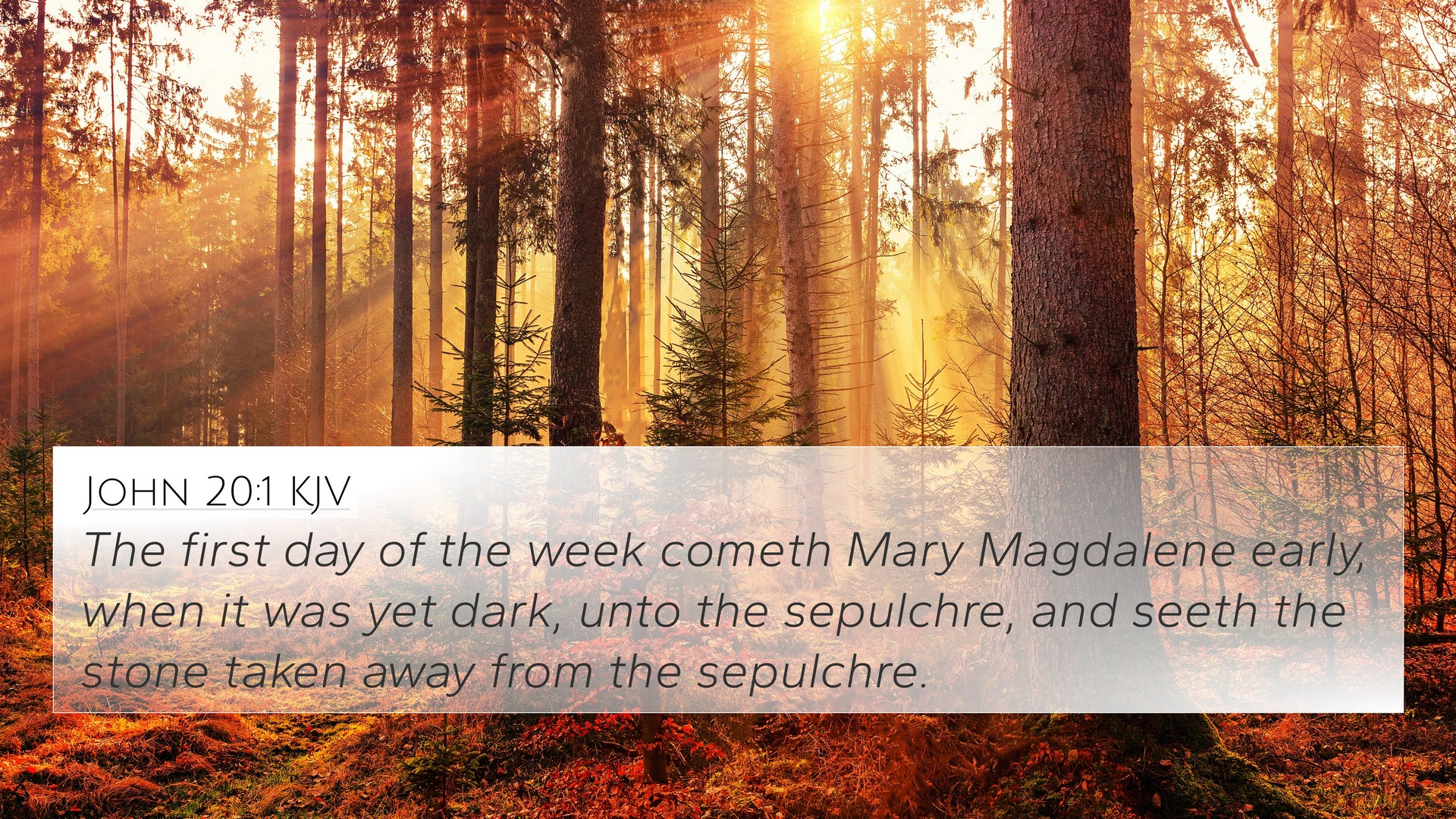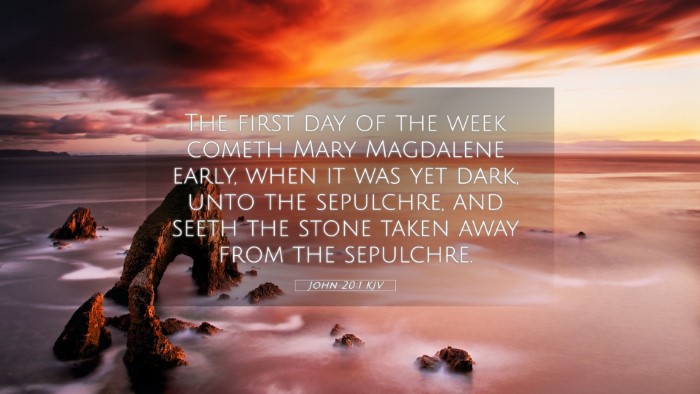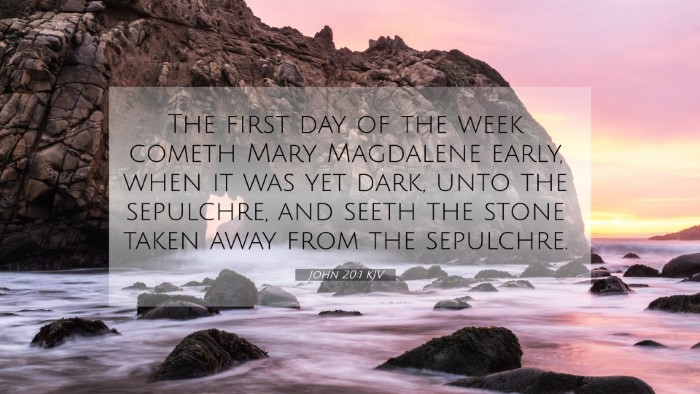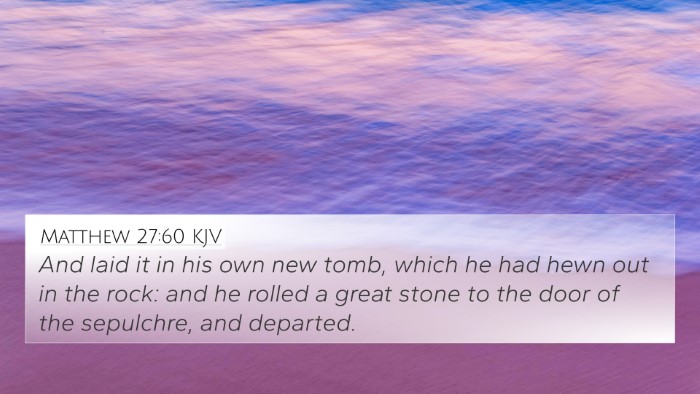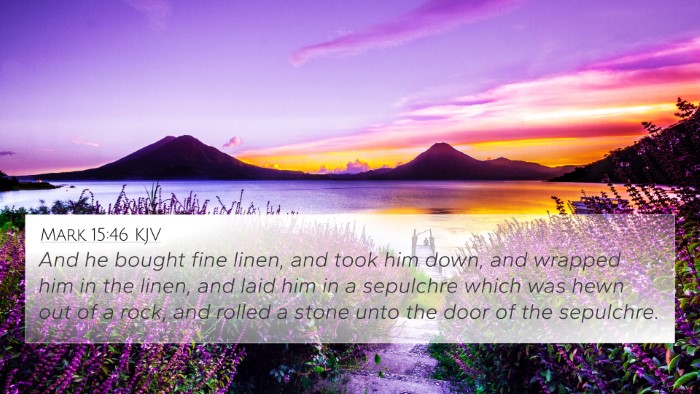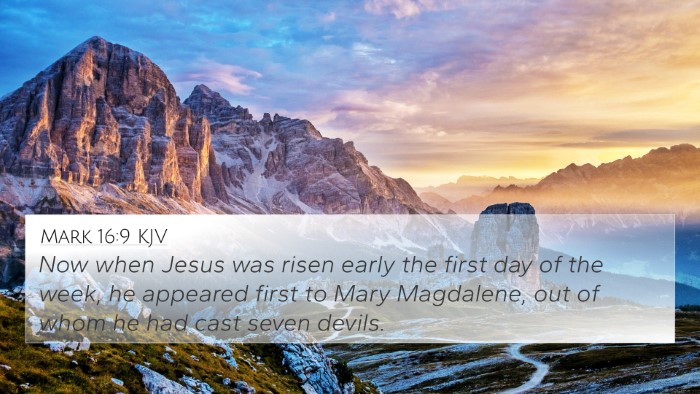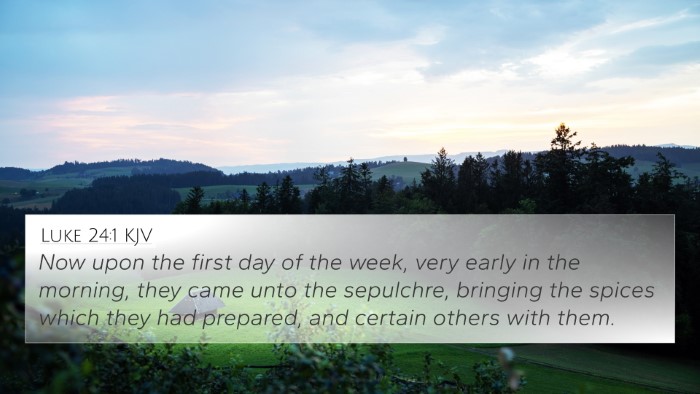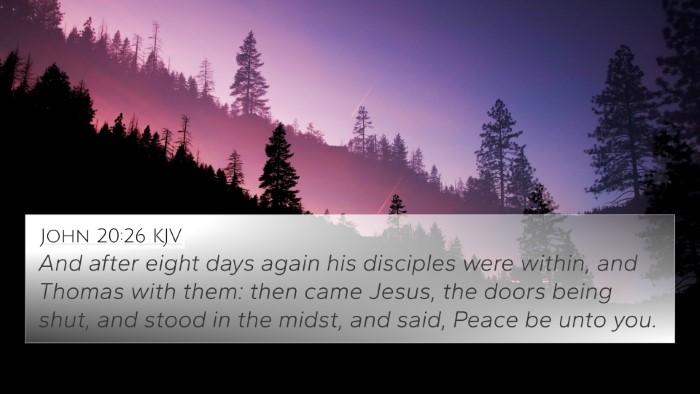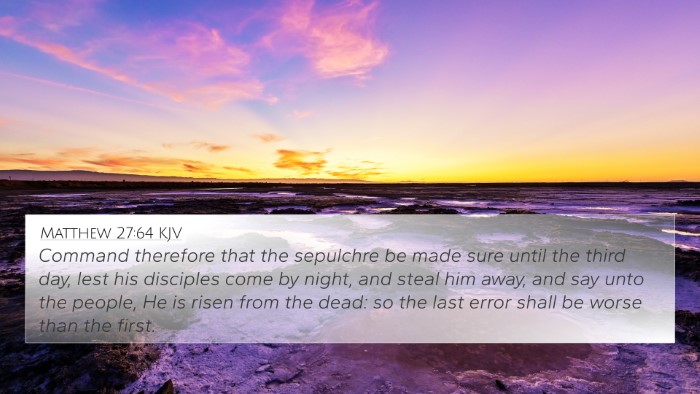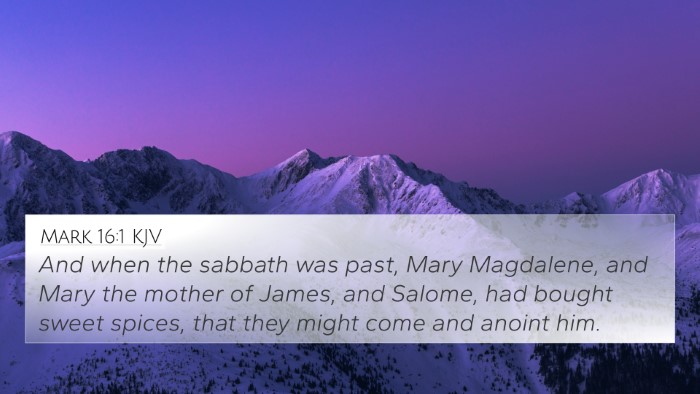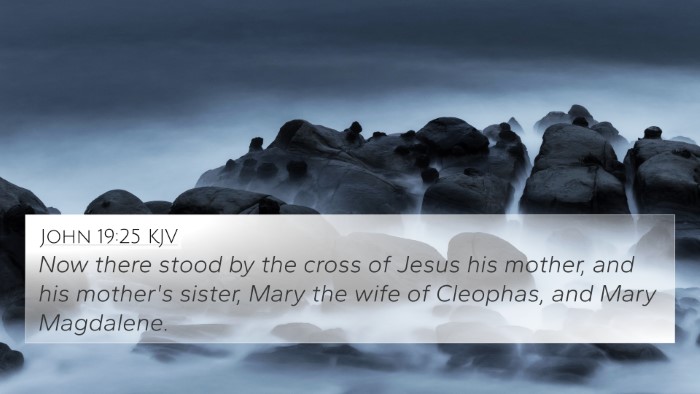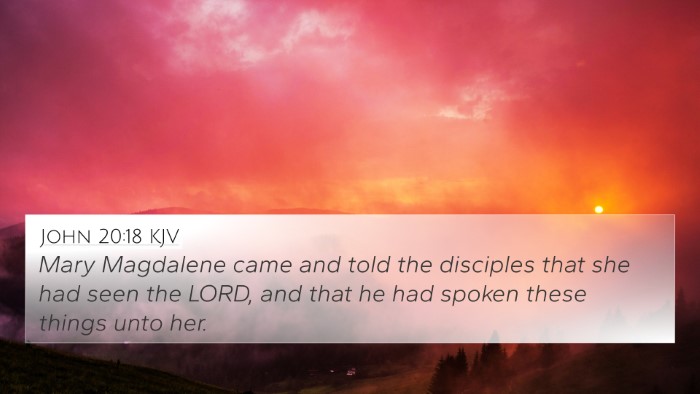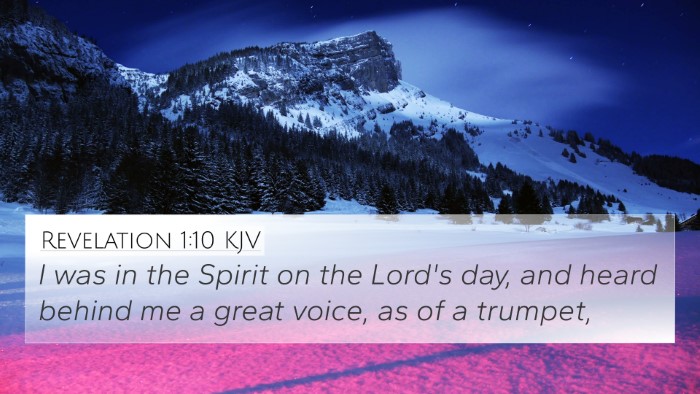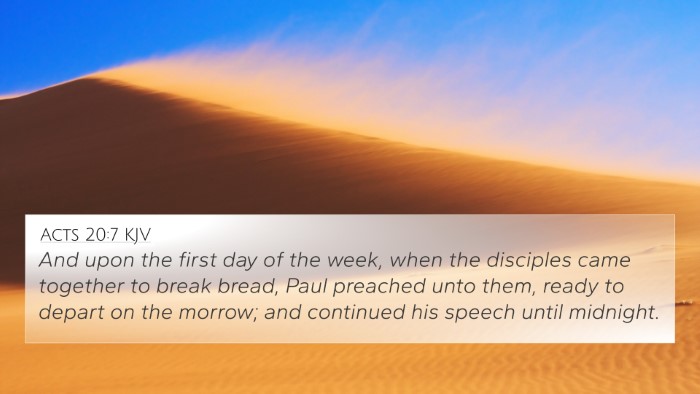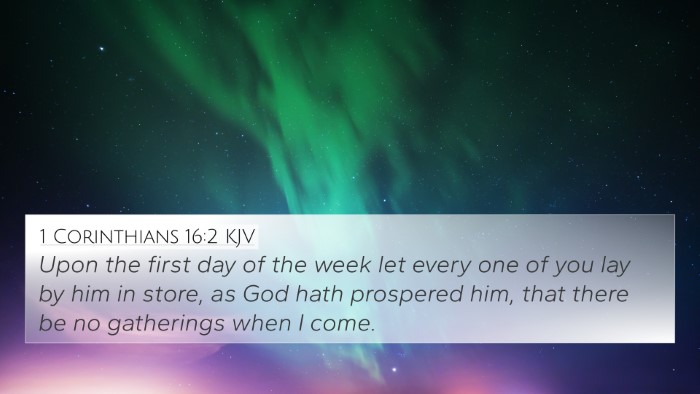Understanding John 20:1
John 20:1 states: “Now on the first day of the week Mary Magdalene came to the tomb early, while it was still dark, and saw that the stone had been taken away from the tomb.” This verse marks a significant moment in Christian belief—the discovery of the empty tomb following the resurrection of Jesus Christ. The implications of this event are profound, and it serves as a foundational text for Christian doctrine.
Verse Context and Setting
The verse is set early on the first day of the week, designated as Sunday, indicating a new beginning. This resonates with the theme of resurrection and the dawn of a new era in salvation history. Mary Magdalene’s presence at the tomb highlights her devotion and importance among Jesus' followers. The timing 'while it was still dark' can symbolize spiritual darkness or confusion before the revelation of Christ’s victory over death.
Commentary Insights
- Matthew Henry's Commentary: Henry emphasizes Mary Magdalene's early visit to the tomb, portraying her deep sorrow and commitment. The action of coming 'early' signifies urgency and highlights her role as one of the first witnesses to the resurrection. Henry also notes the significance of the stone being rolled away, indicating not just the physical absence of Jesus, but also the overcoming of barriers between God and humanity.
- Albert Barnes' Notes: Barnes points out that Mary’s discovery of the empty tomb marks a pivotal moment in the fulfillment of prophecy and the promise of eternal life through Christ. He connects this moment to Isaiah 53:10-11, discussing how the adversities Jesus faced were essential for the triumph of resurrection. Barnes also observes the role of women in the resurrection narrative, showcasing their faithfulness compared to the disciples' initial fears.
- Adam Clarke’s Commentary: Clarke expands on the cultural context of Mary’s visit and discusses the implications of her being the first to witness the risen Christ. He highlights the emotional turmoil Mary must have felt and suggests that Mary represents all followers who seek the Lord earnestly. Clarke notes how her encounter with the empty tomb serves both as a confirmation of Jesus’ predictions about His resurrection and as a message of hope for all believers.
Biblical Cross-References
John 20:1 is interconnected with several Bible verses that enhance its meaning, providing a rich field for thematic Bible verse connections. Here are some notable references:
- Matthew 28:1-7: Parallel account describing the women coming to the tomb and the angel’s message of the resurrection.
- Mark 16:1-8: Another synoptic account highlighting the role of women and their reaction to the empty tomb.
- Luke 24:1-10: Luke provides details about the women bringing spices and the angelic announcement.
- Isaiah 53:10-11: Prophecy regarding the suffering servant, linking Jesus’ death and resurrection.
- John 2:19-22: Jesus predicting His resurrection with the metaphor of destroying the temple and rebuilding it in three days.
- Romans 6:5: Connection to the theme of resurrection, indicating believers' unity with Christ in death and life.
- 1 Corinthians 15:20-22: Paul expounds on the resurrection, affirming Christ as the firstfruits of those who have fallen asleep.
- Revelation 1:18: Jesus declares His authority over death and the grave, reinforcing the power established through His resurrection.
- Hebrews 2:14-15: Discusses Jesus destroying the power of death, which adds depth to the significance of the resurrection.
- Philippians 3:10-11: Expressing the desire to know Christ and the power of His resurrection, which is tied to Mary’s moment at the tomb.
Inter-Biblical Connections
Understanding John 20:1 through comparative Bible verse analysis reveals a rich tapestry of theological themes and connections within Scripture. The resurrection of Jesus is not just an isolated event; it is interwoven throughout the entirety of the Bible from the Old Testament prophecies to the New Testament declarations of faith. This thorough examination leads to a deeper appreciation for how interconnected the messages of the Scriptures are, especially in demonstrating God’s redemptive plan.
Tools for Bible Cross-Referencing
Utilizing resources such as a Bible concordance or a Bible cross-reference guide can significantly enhance your understanding of complex scriptures like John 20:1. Such tools can help illuminate linking Bible scriptures and uncover similarities between passages, enriching one's study experience through careful cross-referencing Bible study methods.
Conclusion
In conclusion, John 20:1 serves as an essential placeholder in the narrative of resurrection and faith. The insights from public domain commentaries, along with the multitude of related scriptures, build a foundation for understanding the significance of Jesus' resurrection. The connections highlighted in this verse exemplify how it is pivotal not only to the story of Jesus Christ but also to the overarching themes of hope, renewal, and divine grace in the entirety of the Bible. Embracing this holistic perspective through Bible cross-references offers a more nuanced understanding of complex themes and the unity that pervades God's word.
